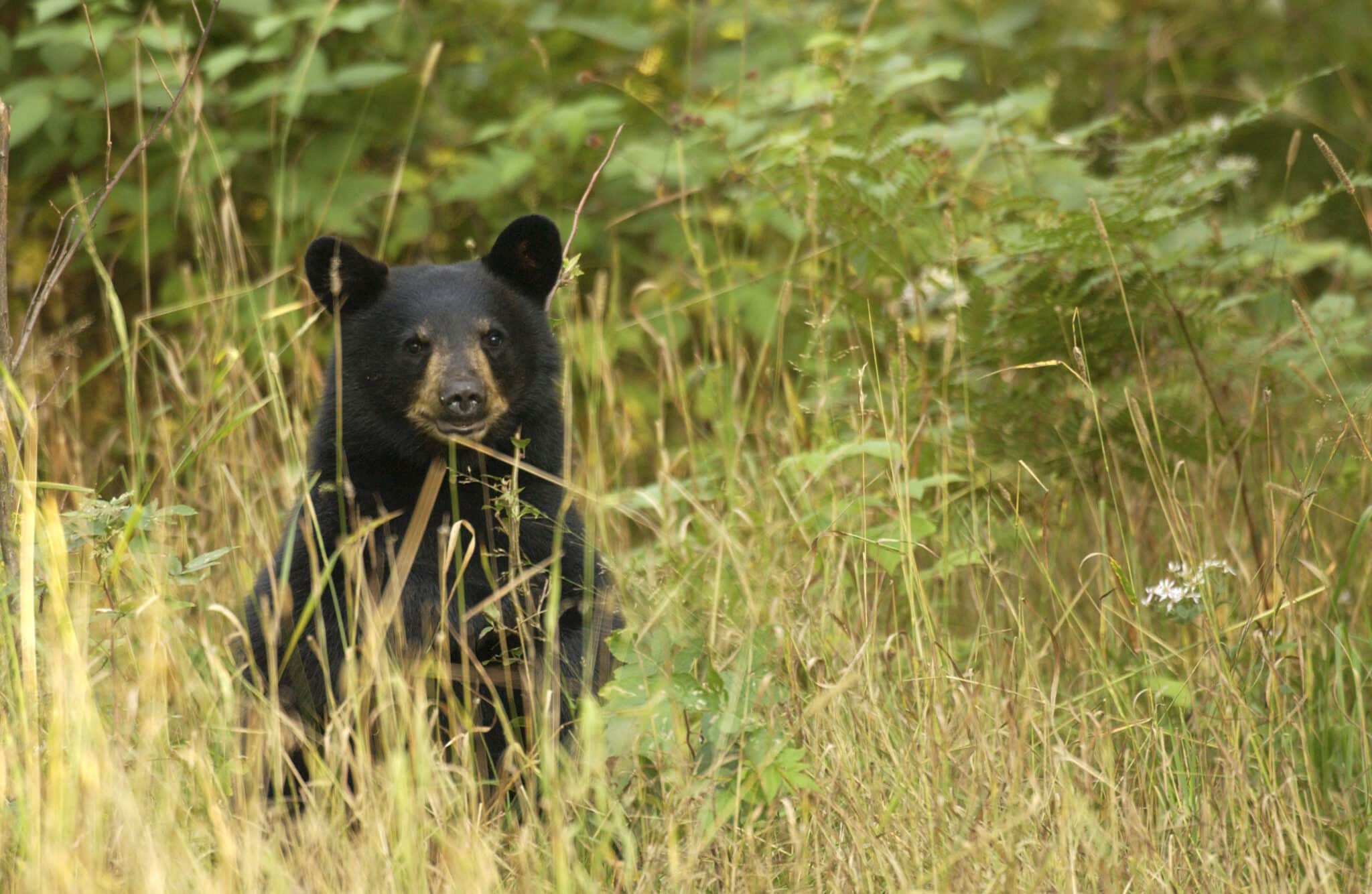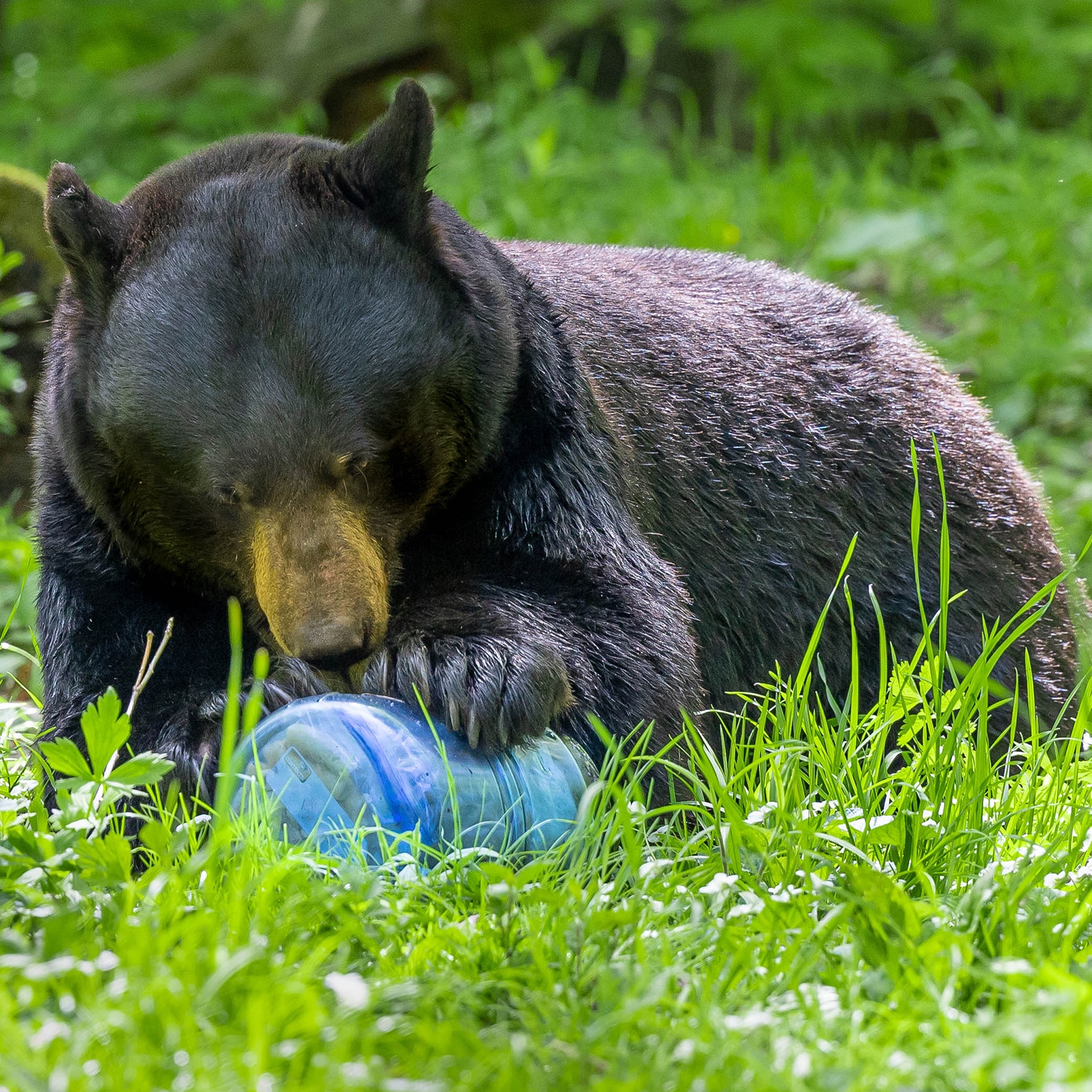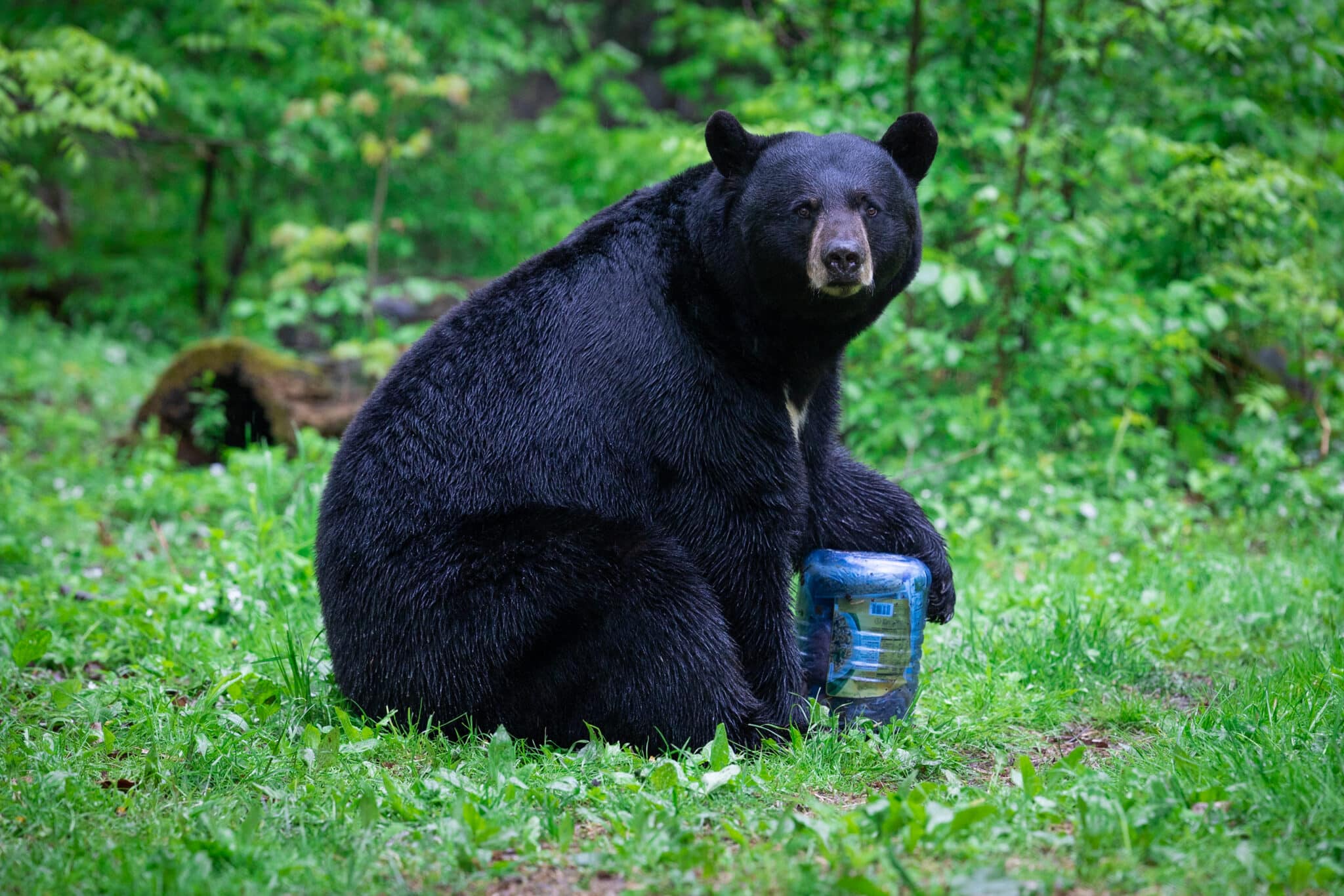No Dumb Questions: Get Answers About Bears in Colorado
Are there bears in Colorado? Are they everywhere or hard to find? What do the bears in Colorado look like? Are they dangerous? How should I act if I see one? How can I not see one?
There are no dumb questions here! While I may not satisfy every curiosity you have, I’ll try. In this article, you’ll learn the basics of bear life in Colorado… because yes. There ARE bears in Colorado!

Colorado: A Bear’s Paradise
A bear’s natural habitat varies depending on the species. All over the world, bears range from mountainous regions to icy tundras.
In Colorado, black bears have everything they need.
Foraging – Berry season runs longer in Colorado than in hotter climates, and it’s a popular state for hunting. Since the black bear’s natural diet consists of roots, berries, small mammals, and leftover carcasses, their appetites are easily satisfied.
Privacy – Colorado features over 3.4 million acres of undeveloped natural beauty designated wilderness areas. The forests, meadows, and rocky mountainsides are perfect spaces for bears to wander free and unchecked.
It is worth mentioning, however, that the human population has grown steadily for the past decade. That’s led to a considerable loss of privately owned, undeveloped land, increasing bear activity in urban areas.

Shelter – Black bears find shelter in natural caves and dens dug out of hillsides. Colorado is prime real estate for bears, just as much as for people. They should consider themselves lucky to not deal in cash and mortgage loans!
One critical habitat need, however, is becoming a problem for bears in Colorado.
Water.
Bears in Colorado Need Water
The Colorado River Basin touches 7 states and flows 1,450 miles from Wyoming to the Gulf of California. A combination of extended periods of extreme drought, increased population, and overuse have dropped water levels to new lows.
The trickle-down effects of a river drying up go way beyond thirst.

Lower water levels, especially when combined with higher air temperatures, mean higher water temperatures. Warmer water negatively impacts trout, leading to a drop in spawning behavior and increasing cardiovascular stress. Endangering the fish population affects other species that rely on it for food, like bears.
Warm water is also a better breeding ground for bacteria and parasites, endangering every species that drinks it. Lower water levels also mean slower-moving water, another parasite preference. Clean water could get harder and harder to find.
A lack of clean water will make it hard for mammal mothers to stay in milk to keep their babies strong. Loss of young leads to more depleted food sources for bears.
It’s essential to recognize that this may start impacting bear behavior in the future.
How Can I Help Protect Water for Bears in Colorado?
Be sure to treat rivers well and only use bio-safe soaps in the wild. Wash your dishes away from camp and be sparing with the water. If you live in Colorado, observe any local restrictions on lawn care and consider transitioning to a drought-friendly ground cover to alleviate any need to use the sprinkler.
What Kinds of Bears Live in Colorado?
When you’re in Colorado, you’ll see only one type of bear. The American Black Bear!
But wait, you say… the bear is brown! Well, yeah, it is. But let me explain!
Since black bears can have coats that range from pitch black to cinnamon brown, identifying them requires looking at other physical features. The shape of their faces, the length of their claws, and their size are all distinguishing factors. But the most easily recognized difference is the ‘topline.’

A black bear’s neck slopes smoothly into its back, and its rump is higher than its shoulders. Brown bears are the exact opposite! You’ll see a noticeable hump over its shoulders and a gradual slope to lower set haunches.
How Many Bears Are in Colorado?
It’s estimated that 17,000 – 20,000 black bears live in Colorado.
Of course, this number is constantly changing. Bears die of natural causes or wander beyond the border to new territory, lowering the number. Every winter is an opportunity for a sow to give birth to 1, 2, or even 3 babies, raising the number.
Bear management programs are focused on minimizing human-bear conflicts. They use tracking information to understand what is happening in the bear population in specific regions. Statistics like how many bears were harvested during hunting season, the current population level, and whether or not conflict numbers go up or down guide their engagement.
Currently, the emphasis is on educating the general public and working with local governments to create guidelines to reduce conflicts.
Will I See a Bear on My Colorado Trip?
If you hope to see a black bear on your next Colorado vacation, you can probably make that happen!
- Go deep into the mountains.
- Stay in remote locations.
- Watch for signs on hikes.
- Consider the time of year.
But the one thing you must NOT do is try to bait a bear! For the love of all things good and holy, don’t intentionally entice a bear into your camp, cabin, or anywhere else. In fact, you need to take intentional action to make sure food is NOT the reason you see a bear.

There’s plenty of evidence that food is a key factor for bear/human conflicts… and those are something you should actively avoid. Black bears can be dangerous without even trying. Just swiping for food it wants can give nasty cuts and knock you down.
Since you brought it up, we definitely need to talk about how to stay safe around bears if you see any!
How to Avoid Conflicts with Bears in Colorado
One of the most important things you can do to avoid trouble with bears is to ensure your food isn’t around them.
64% of non-lethal conflicts with bears are caused by the presence of an attractant.
An attractant is anything a bear would find attractive. That includes the smell of your fish frying in butter over your campfire. Burgers on the grill. Even empty wrappers carry enough leftover scents to get a bear’s attention.
Bears have incredibly powerful noses… think 7-times-the-strength-of-a-bloodhound kind of powerful.
Keeping attractants away will mean different things in different settings. Before you go, think about what it needs to look like for you! If you’re backpacking, learn how to camp safely in bear country. If you’re car camping, you’ll need to know how to keep bears out of your car.
In either situation, you’ll need a strategy for storing food safely.
A bear canister, like the BearVault Journey, is good for multi-day trips or short trips with multiple people. Following 3 simple steps will keep bears at bay.
- Pack all food items inside.
- Close securely, listening for TWO clicks.
- Place away from camp, at least 70 paces.
It’s important to note that bear-proof canisters aren’t smell-proof. All those enticing scents can still make their way downwind. Putting some distance between you and your food lets curious bears check out your stash without putting you in danger.
Definitely keep your canister out of your tent!

How to Avoid Conflicts with Bears in Colorado
Remaining calm is the first important thing to remember. Running may be your first inclination, but it’s more likely to hurt the situation than help it. Sudden movement can trigger a predatory reaction from the bear, and if it decides to chase you, it can certainly catch you.
The next thing to remember is the protection you have with you. You do have protection with you… right?
Carrying bear spray is absolutely necessary when playing in a bear’s backyard. Keep it with you when you hike, at your camp, and any time you’re outside in known bear country. It will not only be your literal protection. It will give you the confidence to stand your ground if a bear approaches.
It’s a great idea to educate yourself about bear behavior and how to react to their presence before going to Colorado. Check out this guide, “What to Do if You See a Bear,” to get prepared.
You’re Ready to Go See the Bears in Colorado
Bears do call Colorado home. They’re not hard to find if you get out of the city and into the mountains. You need to be prepared for an encounter, but if you are, those should be unforgettable moments to enjoy.
Those were all great questions! Whadya’ know… not a dumb one among them.

Author Profile

Jessica Cockroft
Jess merges her passion for words and an insatiable longing for adventure as an outdoor freelance content writer and marketer. When she’s not busy stringing words together you’ll probably find her planning another camping trip for her crew of kids or taking care of the homestead. You can find her on LinkedIn and Instagram, as well as on her own website.




